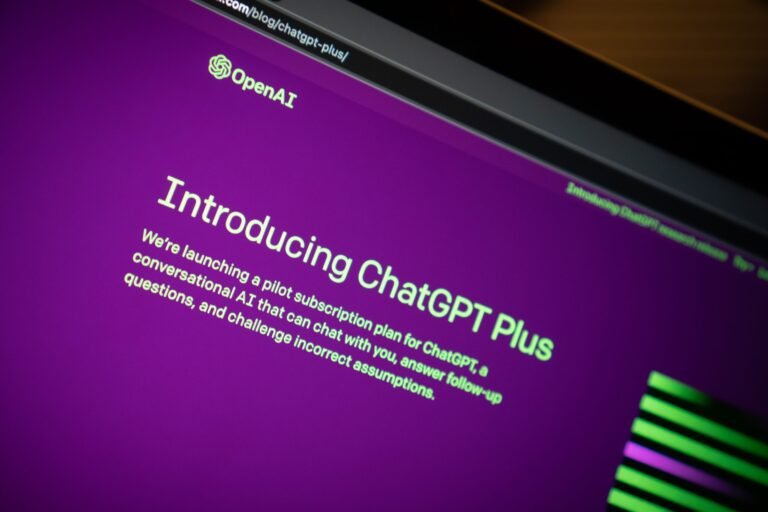PromptForge: The Ultimate AI Prompt Engineering Workbench for Power Users and Professionals
If you’ve ever found yourself endlessly tweaking prompts, scribbling notes on what “almost worked” or wondering why your LLM outputs keep changing, you’re not alone. Prompt engineering isn’t just about clever wording—it’s become a discipline that needs rigor, tracking, and systematic improvement.
But here’s the thing: most prompt tools today? They’re glorified notepads—text editors dressed up with an API call button. What’s missing is a true workbench—a place to craft, test, analyze, and refine prompts with the precision of a software engineer. Enter PromptForge: the first prompt engineering platform designed for professionals who are tired of trial-and-error and ready for true mastery.
You can check out PromptForge on their GitHub: https://github.com/insaanimanav/prompt-forge
Why Prompt Engineering Needs an Overhaul
Let’s be honest: the world of prompt engineering is moving at breakneck speed. As AI models like Claude, GPT-4, and Azure OpenAI become more powerful, the difference between a good prompt and a great one can mean the difference between breakthrough results—and utter frustration.
But with power comes complexity. Each tweak to a prompt can introduce subtle changes. You might get stellar results one day and head-scratchers the next. If you’re managing dozens (or hundreds) of prompts, tracking what works, why it works, and when it breaks becomes a full-time job.
Here’s why that matters: Without a systematic way to evaluate and improve prompts, you’re leaving results—and productivity—up to chance. Prompt engineering needs the same rigor as software development: testing, analytics, version control, and structured improvement.
Introducing PromptForge: More Than Just a Text Editor
Imagine if your prompt engineering workflow had:
- Automated test suites to ensure consistency
- Built-in analytics to reveal what’s actually working (and what’s not)
- Variable testing to catch those edge cases before your users do
- A robust prompt library (think: Google Docs for prompts)
- AI-powered dual analysis—feedback on your prompt even before you test it
That’s what PromptForge delivers—a full workbench, not just a workspace.
The Origin Story: Built by an AI Power User, for AI Power Users
PromptForge’s creator, insaaniManav, built this tool out of necessity. As someone working with AI daily, he was frustrated by the endless loop of trial and error:
“I was tired of losing track of what worked, endlessly tweaking, and having no systematic way to evaluate improvements… Most tools out there are just fancy text editors. I wanted to bring the rigor of software engineering—version control, testing, systematic improvement—to the world of prompt engineering.”
If this sounds familiar, read on. PromptForge might just change the way you craft prompts forever.
Key Features That Set PromptForge Apart
Let’s break down the features that make PromptForge a true game-changer for prompt engineers, AI builders, and anyone who takes LLM output seriously.
1. Systematic Evaluation: Automated Test Suites
Ever wished you could test your prompt across a variety of inputs—automatically? PromptForge generates comprehensive test suites for you.
- No more manual guesswork.
- Stress-test prompts across diverse scenarios.
- Quickly spot where your prompt shines (or falls flat).
Why it matters: Like unit testing in software, automated prompt tests ensure your prompt behaves as expected—even as models evolve or requirements change.
2. Built-in Analytics: Know What Actually Works
PromptForge doesn’t just spit out responses—it tracks them. You get:
- Detailed analytics on prompt performance
- Success rates, error frequencies, and trend graphs
- Comparative analysis across different prompts and versions
Analogy time: Think of it as Google Analytics for your prompts. You finally see what drives results—not just guesses.
3. Variable Testing: Uncover Edge Cases and Ensure Robustness
AI models can be quirky. A prompt that works for a “happy path” scenario might break with a slight variation. PromptForge lets you:
- Define variables and edge cases
- Test for robustness and consistency
- Catch unexpected behaviors before your users do
Empathetic tip: If you’ve ever had a prompt fail spectacularly in production, you know how valuable this is.
4. Prompt Library: Never Lose a Winning Prompt Again
If you’ve ever lost track of a “golden prompt,” you’ll appreciate this. PromptForge’s central prompt library allows you to:
- Organize, tag, and version-control your prompts
- Share best practices across teams
- Instantly retrieve or roll back to earlier versions
This is not just organization—it’s peace of mind for serious prompt engineers.
5. Dual Analysis: AI-Powered Feedback Before and After Testing
PromptForge uses AI to give you feedback before you even hit “test.” This means:
- Early detection of potentially ambiguous or weak prompts
- Suggestions for clarity, specificity, and intent alignment
- Save time and avoid obvious pitfalls
It’s like having a prompt engineering mentor looking over your shoulder, 24/7.
How PromptForge Elevates Prompt Engineering—Step by Step
Let’s walk through a real-world workflow to see how PromptForge transforms the prompt engineering process.
Step 1: Craft and Version Your Prompt
- Start with a new or existing prompt in the library.
- Give it a descriptive name, set tags, and add version notes.
- Set variables (e.g., user intent, input data) to make prompts modular.
Step 2: Define Test Cases and Scenarios
- Use PromptForge’s generator to create diverse test cases.
- Cover normal, edge, and error scenarios to ensure robustness.
Step 3: Run Automated Evaluations
- Execute your prompt across all test cases with one click.
- Collect outputs for each scenario.
- Get instant analytics: Did the prompt hit the mark? Where did it miss?
Step 4: Analyze and Iterate
- Review built-in analytics.
- Compare performance to previous versions or alternative prompts.
- Refine your prompt, re-run tests, and track improvements.
Step 5: Deploy, Share, and Monitor
- Deploy the prompt to your production system.
- Share with your team or community.
- Monitor ongoing performance and update as needed.
With PromptForge, you’re not just hoping your prompts work—you’re engineering their success.
Behind the Scenes: Integrations and Technical Power
PromptForge is built for today’s most popular LLM providers:
- Claude
- GPT-4
- Azure OpenAI
More are on the way. Thinking about scale? PromptForge offers Docker deployment for seamless setup and portability—so you can get started in minutes, not hours.
The Difference: PromptForge vs. Other Prompt Tools
Let’s be blunt: Most “prompt engineering” tools are little more than sandbox environments. Useful for hobbyists, perhaps, but not enough for pros who demand real results.
| Feature | Typical Prompt Tool | PromptForge | |———————–|:——————:|:———————:| | Text Editor | ✅ | ✅ | | Test Suites | ❌ | ✅ | | Built-in Analytics | ❌ | ✅ | | Variable Edge Testing | ❌ | ✅ | | Prompt Library | ❌ (limited) | ✅ (full-featured) | | Versioning | ❌ | ✅ | | Dual AI Analysis | ❌ | ✅ | | Docker Deployment | ❌ | ✅ |
If you’re serious about prompt engineering, PromptForge is in a league of its own.
Why Systematic Prompt Engineering Matters (Now More Than Ever)
As AI gets smarter, so do its users—and abusers. Inconsistent outputs, ambiguous instructions, and prompt drift can cost teams time, money, and reputation. A single “weird” output can undermine user trust or derail a project’s momentum.
Here’s the big insight: By treating prompt engineering with the discipline of software engineering, you future-proof your workflows. Systematic evaluation and improvement become your unfair advantage.
- Reduce bugs and surprises
- Accelerate time-to-production
- Scale prompt expertise across teams
As AI scales across industries (see McKinsey’s latest AI adoption report), tools like PromptForge will become essential to staying ahead.
What’s Next for PromptForge—and the Future of Prompt Engineering?
PromptForge isn’t resting on its laurels. The roadmap includes:
- Support for more LLM providers (open-source and proprietary)
- Advanced collaboration tools for enterprise teams
- Custom analytics and reporting dashboards
- Integration with code and workflow automation platforms
- Community-driven prompt libraries and best practices
Prompt engineering is still young, but it’s evolving fast. Tools like PromptForge are paving the way for a new discipline—one that’s systematic, data-driven, and collaborative.
What would you want to see in a prompt engineering tool? The PromptForge team is listening—and eager for feedback from fellow AI builders.
Frequently Asked Questions: PromptForge & Prompt Engineering
What is PromptForge?
PromptForge is a professional workbench for AI prompt engineering. It allows you to craft, test, systematically evaluate, and analyze prompts for language models like GPT-4, Claude, and Azure OpenAI, with features like automated test suites, built-in analytics, variable testing, and a robust prompt library.
How does PromptForge differ from regular prompt editors?
Unlike basic text editors or playgrounds, PromptForge adds systematic evaluation, analytics, version control, edge case testing, and dual AI-powered analysis—making it a full engineering platform, not just a writing tool.
Do I need coding skills to use PromptForge?
No! While PromptForge is designed for power users, its interface is intuitive and accessible even for non-developers. Advanced users can integrate with Docker and workflow automation as needed.
Is PromptForge open source?
You can learn more about PromptForge’s open-source status, documentation, and future plans on its official GitHub repository.
Which AI models does PromptForge support?
Currently, PromptForge supports Claude, GPT-4, and Azure OpenAI, with plans to expand support for additional LLMs soon.
Can PromptForge help teams collaborate?
Absolutely. PromptForge’s library, version control, and analytics features make it easy to share, review, and iterate on prompts as a team—helping you scale expertise and best practices.
Where can I learn more about prompt engineering?
Check out resources from OpenAI’s Prompt Engineering Guide and leading AI research organizations for in-depth tips and strategies.
Final Takeaway: Systematic Prompt Engineering Starts Here
Prompt engineering is no longer a shot in the dark. With PromptForge, you gain the precision, analytics, and organization you need to consistently create high-impact prompts—for yourself, your team, or your organization.
Ready to take your prompt game to the next level? Explore PromptForge, join the conversation, and be part of the community shaping the future of AI prompt engineering.
Curious for more deep dives into AI tools, best practices, and industry insights? Subscribe to our newsletter and stay ahead of the curve.
Discover more at InnoVirtuoso.com
I would love some feedback on my writing so if you have any, please don’t hesitate to leave a comment around here or in any platforms that is convenient for you.
For more on tech and other topics, explore InnoVirtuoso.com anytime. Subscribe to my newsletter and join our growing community—we’ll create something magical together. I promise, it’ll never be boring!
Stay updated with the latest news—subscribe to our newsletter today!
Thank you all—wishing you an amazing day ahead!
Read more related Articles at InnoVirtuoso
- How to Completely Turn Off Google AI on Your Android Phone
- The Best AI Jokes of the Month: February Edition
- Introducing SpoofDPI: Bypassing Deep Packet Inspection
- Getting Started with shadps4: Your Guide to the PlayStation 4 Emulator
- Sophos Pricing in 2025: A Guide to Intercept X Endpoint Protection
- The Essential Requirements for Augmented Reality: A Comprehensive Guide
- Harvard: A Legacy of Achievements and a Path Towards the Future
- Unlocking the Secrets of Prompt Engineering: 5 Must-Read Books That Will Revolutionize You







